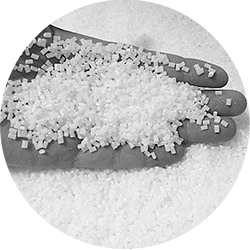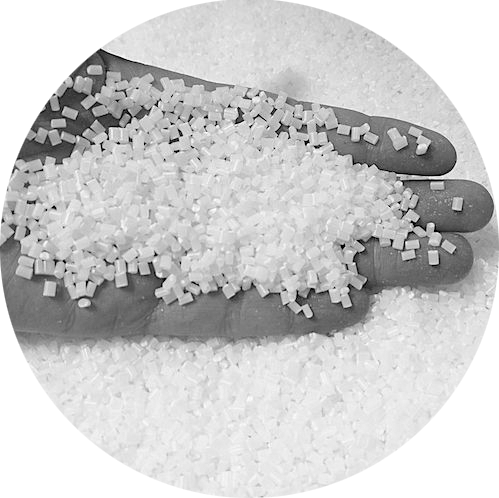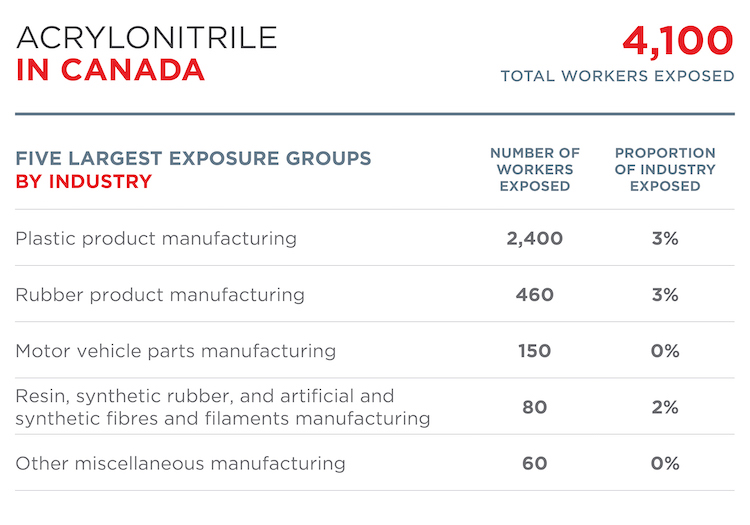Acrylamide – Occupational Exposures
Acrylamide Occupational Exposures
Acrylamide Occupational Exposures
Overview
Inhalation and dermal contact are the most important routes of occupational exposure.[1] CAREX Canada estimates that 8,700 Canadians are exposed to acrylamide in the workplace.
READ MORE...
The main industries exposed are foundation, structure, and building exterior contractors; utility system construction; and highway, street, and bridge construction. The occupations with the most workers exposed are construction trade helpers and labourers, followed by concrete finishers and underground production and development miners.
Other sources of occupational exposure may occur in pulp and paper manufacturing, oil drilling, textile and cosmetics manufacturing, food processing, plastics manufacturing, mining, and agricultural industries.[2] People working in labs where polyacrylamide gels are prepared may also be exposed.[3]
Some occupational exposure measurements (including dermal measurements) and task-related information are available in a risk assessment from the EU.[4]
Prevalence Estimate
Results show that approximately 8,700 Canadians are potentially exposed to acrylamide at work; 91% of these workers are male. The largest industrial group exposed is foundation, structure, and building exterior contractors where acrylamide is used in cement and concrete to slow the dehydration process and improve structural strength, as well as for water-proofing. Other industries where exposure may occur include utility system construction and highway, street, and bridge construction.
When exposure is examined by occupation, the largest exposed groups are construction trade helpers and labourers (2,800 workers exposed), followed by concrete finishers (2,200 workers exposed, underground production and development miners (530 workers exposed), and labourers in mineral and metal processing (480).
The number of workers exposed to acrylamide decreased by approximately 530 workers from 2006 to 2016 (a 6% decrease). This was primarily driven by a decrease in the number of workers in the pulp and paper industry. However, additional workers were exposed in the construction industry due to an increase in the total number of workers within the construction industry.
Workers exposed to acrylamide by industry in 2016
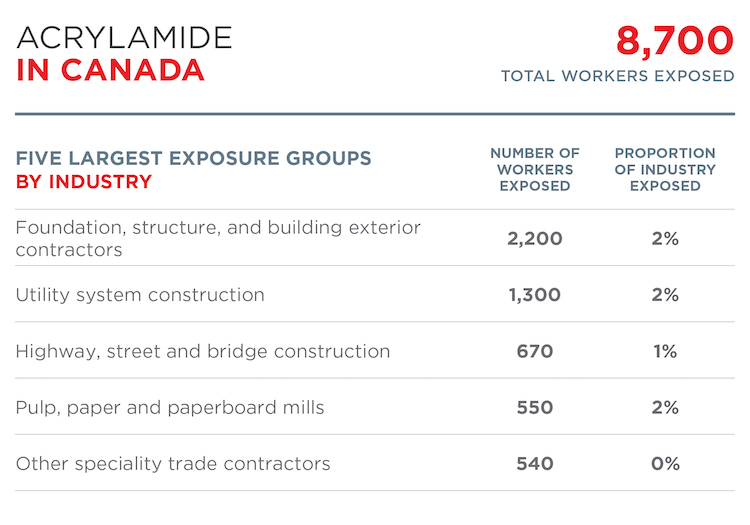
Workers exposed to acrylamide by region in 2016
Click the second tab to view total number of workers exposed.
* = < 50 workers
Methods and Data
Our Occupational Approach page outlines the general approach used to calculate prevalence and exposure level estimates for workplace exposures.
Data Sources
Data used in developing the occupational estimates for acrylamide were collected from several sources:
- The Canadian Workplace Exposure Database (CWED) contains less than 50 measurements for acrylamide exposure. These measurements were collected during the years 1991 to 1995 in Ontario workplaces.
- Canadian and US scientific peer reviewed publications that addressed acrylamide exposure in Canada and the United States.
- Grey literature including technical reports from governments and international bodies.
Prevalence Estimate Method
CAREX defines exposure to acrylamide as inhalation exposure at work to acrylamide or polyacrylamide (containing acrylamide monomer) likely exceeding non-occupational exposure (i.e. from food sources).
To determine the number of workers potentially exposed to acrylamide at work, CAREX occupational exposure experts used methods previously established in other peer-reviewed CAREX projects in Europe. A series of steps were taken to assign exposure proportions to occupations and industries at risk of exposure to acrylamide.
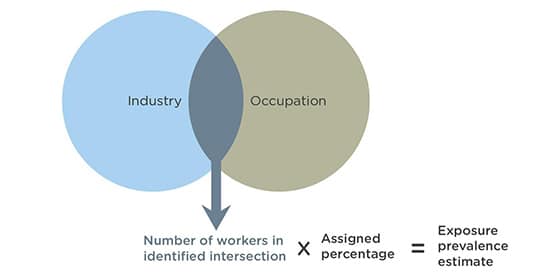
- Occupations and industries at risk of possible exposure to acrylamide were identified using any combination of data sources described above.
- The total number of workers in each identified occupation and industry intersection was obtained from Statistics Canada 2016 census data.
- A percentage of workers exposed was assigned to that occupation and industry intersection. Percentages were determined by consultation with existing evidence in the data sources, previously established methods from the Europe CAREX estimates and the expert judgement of CAREX occupational hygienists.
- The number of workers in the identified group is multiplied by the assigned percentage to calculate the prevalence estimate of workers exposed to acrylamide.
Sources
Subscribe to our newsletters
The CAREX Canada team offers two regular newsletters: the biannual e-Bulletin summarizing information on upcoming webinars, new publications, and updates to estimates and tools; and the monthly Carcinogens in the News, a digest of media articles, government reports, and academic literature related to the carcinogens we’ve classified as important for surveillance in Canada. Sign up for one or both of these newsletters below.
CAREX Canada
School of Population and Public Health
University of British Columbia
Vancouver Campus
370A - 2206 East Mall
Vancouver, BC V6T 1Z3
CANADA
As a national organization, our work extends across borders into many Indigenous lands throughout Canada. We gratefully acknowledge that our host institution, the University of British Columbia Point Grey campus, is located on the traditional, ancestral, and unceded territories of the xʷməθkʷəy̓əm (Musqueam) people.





